Egypt expressed deep concern over the nuclear reactor that Israel was allegedly building near Dimona. After an air battle over the Golan Heights on April 7, 1967, during which six Syrian aircraft were downed, Egypt announced that it was allying itself with Syria.
Thus, on May 15, Egyptian forces entered the Sinai, in violation of the agreement signed in 1957, in the wake of the Sinai War. In addition, Egypt closed the Straits of  Tiran to Israeli ships and ordered UN forces to withdraw from their positions along the border.
Tiran to Israeli ships and ordered UN forces to withdraw from their positions along the border.
Moscow, humbled by the losses of the April air battle, had already goaded its Egyptian ally into greater hostility towards Israel as a way of easing the pressure on Damascus. Soviet officials conjured up imaginary Israeli troop concentrations on Syria’s borders, prompting Colonel Nasser to mass his own armies at the Egyptian-Israeli frontline in Sinai. But he even exceeded his mandate from the Soviets when he dismissed the UN’s truce-monitoring force in the Sinai Peninsula and mounted a blockade of the Red Sea’s Straits of Tiran, denying shipping access to the Israeli port of Eilat.
According to Israel’s declared national security policy- Egypt’s provocative action called justification for an act of war (casus beli). But by June 1967, the Israelis found themselves increasingly surrounded by superior Soviet-backed forces of the Arab and Islamic world, all of whose leaders were vowing to “throw the Jews into the sea,” and the Israelis were considering a first strike, before it was too late. But the Soviets had already orchestrated a strategic plan of their own.
An Egyptian plan to attack Israel codenamed Operation Fajr (Dawn) was set to start effectively at dawn for May 27, 1967. Another plan, which was already shaped jointly in November 1966, by Soviet Marshal Andrei Gretchko and Egyptian Field Marshal Abdel Hakim Amer, was named “Conqueror” and modeled on clear Soviet strategic concepts. A detailed report of the joint-Egyptian-Soviet plan was captured later by the IDF on the Golan Heights from Syrian sources, including Russian language documents. However, for reasons of political constraints, directed by highest authority at the time, these were kept top secret and were only released in part many years later. Indeed, Israel’s political cover-up succeeded so well that Kremlin’s proven responsibility for the Six-Day War had actually been withheld from the histories of the 1967 conflict until close to its frostiest anniversary!
The story of Moscow’s active involvement in the Six Day War and its immediate aftermath, the so-called War of Attrition (June 1968- August 1970) reads like a prefect mystery thriller. It was conducted by all involved with shrewd manipulations, deceipt and deception concocted by the best brains of the intelligence trade, in Moscow, Tel Aviv and Cairo. Moscow’s action in 1967 followed a tend in veiled threats, which Premier Nikolai Bulganin had directed at Israel as well as Great Britain and France during the so-called 1956 “Suez Crisis”, warning them to halt their activities against Abdul Nasser’s Egypt. A few years later, a similar ploy nearly worked during the 1962 Cuban missile crisis, only to be averted by a cool-headed John F Kennedy. Now as tension rose once again in the Middle East, The Kremlin, under Andrei Kosygin tried this ruse again, this time against Israel proper.
For decades, it had remained an established consensus among historians, that the Six Day war broke out by a sequence of mistaken accidents and misconceptions, perhaps related to a Soviet perception of Israel’s aims against Syria, based on what caused the conflagration over the Jordan headwaters during the early Sixties. But some of the recently published studies of the Six-Day War actually hinted at the fact that the Israeli nuclear dimension played an important but hidden role in the events leading up to the war, but none of the books has focused on this aspect. Layers of ambiguity, secrecy and taboo, in addition to censorship, prevented the story from coming to light. However, on the occasion of the 40th anniversary of the war, a duo of reporters challenged this “accident theory” offering plausible explanation for the real causes of the war. In their new and well-researched revelations, Isabella Ginor and Gideon Remez actually argue that the idea over the Six Day War originated in a scheme by the Soviet Politburo to eliminate Israel’s nuclear facility at Dimona, and with it destroy the Jewish nation’s strategic aspiration to develop nuclear weapons for its ultimate defense. In their book “Foxbats over Dimona- the Soviets’ nuclear gamble in the Six Day War”, (Yale University Press) Ginor and Remez argue, however, that rather than become involved directly, the Kremlin devised a complex and shrewd scheme to actually lure the Israelis into starting a war which would then end with a Soviet destructive attack on the Dimona complex.
Perhaps the most startling information in the book concerns Moscow’s military preparations during Spring 1967, when the Kremlin prepared a plan, surrounding Israel with an armada of nuclear-armed naval forces in the Mediterranean and even pre-positioning military matériel on land, and training troops nearby with the expectation of using them physically against Israeli targets. No less as an eye opener, is to learn from the team that Soviet photo-reconnaissance MiG-25s (the “Foxbats” of the title) actually overflew the Dimona nuclear reactor shortly before hostilities started, in May 1967. This particular disclosure seems however somewhat surprising, based on the fact, that the the official service year for the first production model of the Mikoyan-Gurevich MiG-25 (Foxbat) was in 1972.  An earlier still experimental version, designated Ye-266 was a Stripped-down MiG-25 prototype used to set several speed and altitude records from 1965 to 1967, could hardly be expected to fly such a dangerous mission over a highly defended strategic target. To the best of available records, no operational aircraft of this type was available in the USSR at the time of the reported recce mission over Dimona. But this fact does not alter their main conclusion, that the Kremlin orchestrated the war for their own strategic reasons.
An earlier still experimental version, designated Ye-266 was a Stripped-down MiG-25 prototype used to set several speed and altitude records from 1965 to 1967, could hardly be expected to fly such a dangerous mission over a highly defended strategic target. To the best of available records, no operational aircraft of this type was available in the USSR at the time of the reported recce mission over Dimona. But this fact does not alter their main conclusion, that the Kremlin orchestrated the war for their own strategic reasons.
 A book published in Israel, using for the first time IDF documents from the highest level, revealed the concern among the top brass and the political level during the two preceding years about an Egyptian military response to Israeli nuclearization. The top military and government echelons assessed that the nuclear compound in Dimona was a major target for an Egyptian surprise attack, especially if and when Egypt believed Israel was close to producing a nuclear weapon. Two officially recorded (but withheld) high-altitude aerial photography flights over Dimona, on May 17 and 26, were indeed critical for the IDF and the government’s understanding of the Egyptians’ intentions. Now Ginor and Remez insist, that the Soviets instigated, if not flew these dramatic reconnaissance sorties themselves. Whether these were actually flown by MiG-25 or upgraded versions of the operational MiG-21 remains debatable, but certainly not significant. In fact, about 1966 a new version designated MiG-21RF PFM was put in service as a high altitude interceptor, preceding the MiG-25, which followed only a few years later. The MiG-21RF (NATO: “Fishbed-J”) a single-seat tactical reconnaissance version of the MiG-21MF, was recorded flying sorties over Sinai in the early seventies. Another possibility could have been a sortie by the Soviet high altitude, long range strategic reconnaissance aircraft designated Yak-25RV “Mandrake”, which could reach 68,000 feet altitude. The Yakovlev Yak-25 was a direct competitor to the American U-2 spy plane and was known throughout the sixties flying reconnaissance sorties in the Middle East.
A book published in Israel, using for the first time IDF documents from the highest level, revealed the concern among the top brass and the political level during the two preceding years about an Egyptian military response to Israeli nuclearization. The top military and government echelons assessed that the nuclear compound in Dimona was a major target for an Egyptian surprise attack, especially if and when Egypt believed Israel was close to producing a nuclear weapon. Two officially recorded (but withheld) high-altitude aerial photography flights over Dimona, on May 17 and 26, were indeed critical for the IDF and the government’s understanding of the Egyptians’ intentions. Now Ginor and Remez insist, that the Soviets instigated, if not flew these dramatic reconnaissance sorties themselves. Whether these were actually flown by MiG-25 or upgraded versions of the operational MiG-21 remains debatable, but certainly not significant. In fact, about 1966 a new version designated MiG-21RF PFM was put in service as a high altitude interceptor, preceding the MiG-25, which followed only a few years later. The MiG-21RF (NATO: “Fishbed-J”) a single-seat tactical reconnaissance version of the MiG-21MF, was recorded flying sorties over Sinai in the early seventies. Another possibility could have been a sortie by the Soviet high altitude, long range strategic reconnaissance aircraft designated Yak-25RV “Mandrake”, which could reach 68,000 feet altitude. The Yakovlev Yak-25 was a direct competitor to the American U-2 spy plane and was known throughout the sixties flying reconnaissance sorties in the Middle East.
With Israel’s alleged nuclear activities becoming a hot topic in Cairo and Moscow, the Soviet Navy had already deployed some of its nuclear submarines to the Mediterranean in early 1967. One of its captains had received top secret sealed orders to prepare for action, apparently firing missiles at the Israeli shoreline, when ordered directly by the Kremlin. More vessels followed shortly as Moscow offered Cairo a “nuclear umbrella” to safeguard Egypt against an Israeli nuclear weapons capability.  Marshal Andrei Antonovich Grechko, the Soviet deputy defense minister, actually had told his Egyptian counterparts in Cairo that the Kremlin had dispatched “destroyers and submarines to the waters near Egypt, some armed with missiles and secret weapons” to help wipe out the Zionists. Thus by the end of May 1967, Soviet amphibious forces were placed on readiness for action aboard of vessels “visiting” Port Said and an air component was placed on alert in the Ukraine, with a small staff group already forward deployed in Egypt.
Marshal Andrei Antonovich Grechko, the Soviet deputy defense minister, actually had told his Egyptian counterparts in Cairo that the Kremlin had dispatched “destroyers and submarines to the waters near Egypt, some armed with missiles and secret weapons” to help wipe out the Zionists. Thus by the end of May 1967, Soviet amphibious forces were placed on readiness for action aboard of vessels “visiting” Port Said and an air component was placed on alert in the Ukraine, with a small staff group already forward deployed in Egypt.
But then, on June 5th, 1967 the Israeli Defense Forces completely turned the tables on all involved. Instead of the carefully devised offensive scheme jointly prepared by Moscow and Cairo, the IDF attacked with all its might. Preceded by a brilliant deception campaign, which lulled the Arab air forces into total disarray, the Israeli air force, using purely conventional weapons only, destroyed three Arab air forces within hours in a magnificent feat of daring arms, preparing the way for a lightning campaign on the ground, which destroyed all three Arab armies, capturing the Sinai Peninsula, the West Bank of Jordan and the Golan height in a mere six days.
The Kremlin leaders were flabbergasted by Israel’s daring exploits, in face of their quite open threat to intervene actively on the side of the Arab nations, should Israel attack. Billions of Dollars worth of Soviet-made arms had been seized or destroyed. Years of expensive funding to their Arab clients went down the drain and Soviet prestige was quickly unraveling around the world, especially in the Arab domain. U.S. intelligence was already picking up signs of this fear in the Kremlin. In the President’s daily brief on June 9, for example, the CIA informed President Johnson that “the Soviets are finding it hard to conceal their shock over the rapid Egyptian military collapse. An unidentified Soviet official could not understand ‘how our intelligence could have been so wrong”.
But the Kremlin did not give up that easily yet. Within days the Soviets had recovered and Acting Defense Minister Andrei A. Grechko and KGB Chairman Yuri V. Andropov were already pressing for the immediate dispatch of strong Soviet forces to the Middle East. In their book, Ginor and Remez mention a retired Soviet air force lieutenant named Yuri V. Nastenko confirming years later, that bomber and fighter jets, such as the MiG-21s that were under his command and placed already on highest operational alert on the evening of June 5, 1967, in what he expected in preparation for “real combat.” Another Russian officer, Yuri N. Khripunkov, a former Soviet naval commander who was serving on one of 30 Soviet warships that had been moved from the Black Sea southward to the Mediterranean in June 1967, also reported being on stand-by for action against Israeli targets.
But real active Soviet intervention started in earnest during the so-called War of Attrition only one year later. The deployment of Soviet units to Egypt was relatively swift, while still gradual. Organized in the frame of the Operation “Kavkaz”, the first units of the Soviet Air Defense Force, the V-PVO started to arrive in Egypt equipped with SA-3 SAMs and early warning radars. A total of three SAM-brigades arrived, one deploying along the Hilwan-Suez axis, another in the Alexandria area, and a third one defending Cairo and two other important bases. The first SAM-site was declared operational by 15 March 1970.
Once these units were in place the V-PVO started deploying manned fighter jet interceptors, flown by specially selected and highly trained pilots. The Russian did not risk any chances against the combat experienced Israeli pilots after their demonstration on June 5th. But Israeli intelligence was not dormant and as soon as the Soviet pilots were operational in Egypt, their radio traffic was monitored and carefully recorded. After losing several F-4 Phantom jets, to Soviet SAMs, the Israeli air force went over to try and confront the Russian pilots in aerial combat. Their chance came on July 30 shortly after midday, when two Phantoms attacked an Egyptian radar site on the Gulf of Suez, escorted by a Mirage III finger-four formation, flying high-cover As expected the Russian pilots took off to engage, scrambling no less than eight new MiG-21MF (J-type). In the dogfight that followed, five MiGs were shot down. Of the Russian pilots only one managed to eject safely, while the remaining four died in the action. It was the last time that Russian pilots engaged Israeli flyers. Soon after, a cease fire was arranged, which more or less held until October 6, 1973 when the Yom Kippur War started.
During 1971 Israeli and US intelligence tracked several Soviet reconnaissance flights over Sinai and southern Israel. Those included suspected MiG-25R Foxbat B versions, which may have overflown the Dimona complex as well. None were intercepted, but one pilot, flying at top speed, to escape interception, which actually wrecked the engines on landing at an Egyptian airfield.
A the end of the 1973 Yom Kippur War, the Soviets once again threatened Israel with nuclear intervention. With the IDF having crossed the Suez Canal into Egypt and surounding the Egyptian Third Army near Suez, the Russians became alarmed. There were intelligence reports that a Soviet ship allegedly carrying nuclear weapons had docked in Alexandria. Soviet Premier Leonid Brezhnev threatened on 24 October, airlifting Soviet airborne troops to reinforce the Egyptians, cut off on the eastern side of the Suez Canal. No less than seven Soviet airborne divisions were placed on high alert. This action immediately prompted US President Richard Nixon’s counter action with the US military technically placed at DEFCON 3 status. Under this US Pershing I missiles, stationed in West Germany, were also placed on high alert status for immediate action. Once again, the world came on the brink of global nuclear conflict, which luckily was averted at the last moment, when Israel Prime Minister Golda Meir agreed to a cease-fire, relieving the pressure on the Egyptian Third Army.


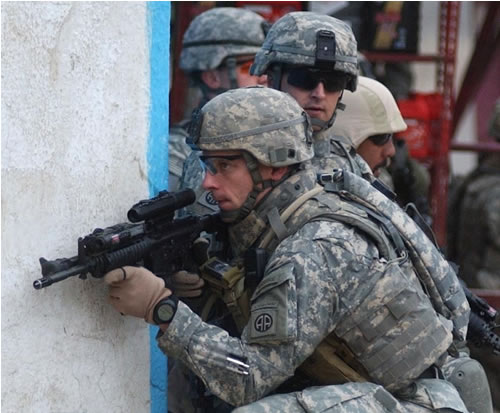



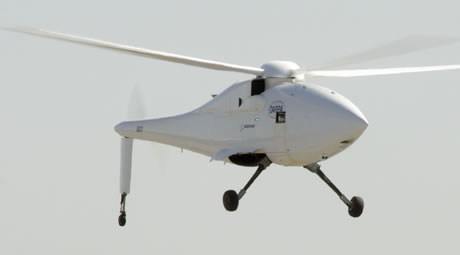


 The high-explosive warheads of these rockets were augmented with anti-personal steel balls and fragmentation sheets, causing deadly effect on Israeli civilian targets. Some were also modified to improve concrete penetration, to improve their effectiveness urban area. Official Israeli police reports documented 4,228 rocket impacts inside Israel. Thanks to an organized civilian defense, Israel suffered only 53 fatalities from these attacks, but along with 250 severely and 2,000 lightly wounded civilians.
The high-explosive warheads of these rockets were augmented with anti-personal steel balls and fragmentation sheets, causing deadly effect on Israeli civilian targets. Some were also modified to improve concrete penetration, to improve their effectiveness urban area. Official Israeli police reports documented 4,228 rocket impacts inside Israel. Thanks to an organized civilian defense, Israel suffered only 53 fatalities from these attacks, but along with 250 severely and 2,000 lightly wounded civilians.
 Only the air force performed with utmost precision against the medium range rockets. Armed with excellent strategic intelligence and highly accurate targeting capability, achieving an impressive target-identification-to-kill cycle time of less than five minutes, the Israeli pilots succeeded in hitting nearly all of Hezbollah’s long-and medium range rockets on the first night of the war: 18 out of 20 Iranian-built Zelzal 2 launchers, as well as virtually all Fajr 4 and 5 weapons, were destroyed, ensuring the safety of Tel Aviv. Toward the end of the war, the air force developed effective means to strike medium range rocket launchers almost immediately after launching their first salvo, practically reducing their life cycle to a single shot. However the short range, man-pack 107 and 122mm rockets that rained down on Israel day after day proved too elusive for technical collection means. Notoriously inaccurate, most of the rockets proved ineffective, but nonetheless achieved multiple strategic goals when employed en-masse.
Only the air force performed with utmost precision against the medium range rockets. Armed with excellent strategic intelligence and highly accurate targeting capability, achieving an impressive target-identification-to-kill cycle time of less than five minutes, the Israeli pilots succeeded in hitting nearly all of Hezbollah’s long-and medium range rockets on the first night of the war: 18 out of 20 Iranian-built Zelzal 2 launchers, as well as virtually all Fajr 4 and 5 weapons, were destroyed, ensuring the safety of Tel Aviv. Toward the end of the war, the air force developed effective means to strike medium range rocket launchers almost immediately after launching their first salvo, practically reducing their life cycle to a single shot. However the short range, man-pack 107 and 122mm rockets that rained down on Israel day after day proved too elusive for technical collection means. Notoriously inaccurate, most of the rockets proved ineffective, but nonetheless achieved multiple strategic goals when employed en-masse. When the Syrian-modified 302mm rockets started landing in Haifa Bay, government agencies began raising concerns about the chemical plants there. The Rafael Armament Development Authority, one of Israel’s leading defense contractors, was contacted and work hurriedly began at its Haifa headquarters to modify and deploy a counter rocket early warning and intercept capability. At the time, the company tried making modifications to the Barak missile system, used on Navy ships to intercept incoming missiles. An ad-hoc deployment on Mount Carmel, of a Patriot-2 battery also proved inadequate to intercept incoming rockets, but its radar was used to enhance early impact alert warning.
When the Syrian-modified 302mm rockets started landing in Haifa Bay, government agencies began raising concerns about the chemical plants there. The Rafael Armament Development Authority, one of Israel’s leading defense contractors, was contacted and work hurriedly began at its Haifa headquarters to modify and deploy a counter rocket early warning and intercept capability. At the time, the company tried making modifications to the Barak missile system, used on Navy ships to intercept incoming missiles. An ad-hoc deployment on Mount Carmel, of a Patriot-2 battery also proved inadequate to intercept incoming rockets, but its radar was used to enhance early impact alert warning.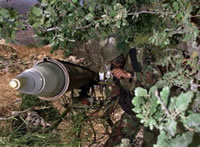
 Realizing the capabilities of the
Realizing the capabilities of the  Overall, almost 90% of the tanks hit were by tandem warheads. In general, Hezbollah militants prioritized Merkava Mk 4 over Merkava Mk 2 and 3, and in general, targeted tanks over AIFV. At the beginning of the 2006 Israel-Lebanon conflict, the main Israeli concern was a report that Hezbollah possessed Russian Kornet antitank missiles. However, it also saw the RPG-29 Vampir with a tandem HEAT that had stolen the show. There were even rumors that Hezbollah had received the notorious TBG-29V thermobaric rounds, but these could not be confirmed in action.
Overall, almost 90% of the tanks hit were by tandem warheads. In general, Hezbollah militants prioritized Merkava Mk 4 over Merkava Mk 2 and 3, and in general, targeted tanks over AIFV. At the beginning of the 2006 Israel-Lebanon conflict, the main Israeli concern was a report that Hezbollah possessed Russian Kornet antitank missiles. However, it also saw the RPG-29 Vampir with a tandem HEAT that had stolen the show. There were even rumors that Hezbollah had received the notorious TBG-29V thermobaric rounds, but these could not be confirmed in action.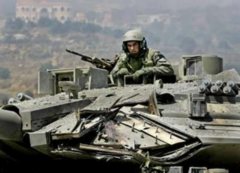

 The IDF employed several hundred tanks in combat. According to official reports, about ten percent were hit by various threats. Less than half of the hits penetrated. In overall assessment, the potential risk to crewmen would have been much higher, if the tank would be of a conventional design. A colonel commanding an armored brigade, which bore the brunt of battle, mentioned in an interview that during the war that hundreds of antitank missiles were fired on his unit and in total only 18 tanks were seriously damaged. Of those, missiles actually penetrated only five or six vehicles and according to statistics, only two tanks were totally destroyed, however, both by super-heavy
The IDF employed several hundred tanks in combat. According to official reports, about ten percent were hit by various threats. Less than half of the hits penetrated. In overall assessment, the potential risk to crewmen would have been much higher, if the tank would be of a conventional design. A colonel commanding an armored brigade, which bore the brunt of battle, mentioned in an interview that during the war that hundreds of antitank missiles were fired on his unit and in total only 18 tanks were seriously damaged. Of those, missiles actually penetrated only five or six vehicles and according to statistics, only two tanks were totally destroyed, however, both by super-heavy 

 Until the fateful date of July 12, 2006, when the Hezbollah triggered the Second Lebanon War, Israel was accounted an important world power in the development of electronic warfare systems – so much so that a symbiotic relationship evolved for the research and development of many US and Israeli, combat-proven electronic warfare systems. But the first indication of something amiss on the Israeli side already showed up on day three of the Lebanon War. Israeli commanders were certain, having cast an electronic blanket over South Lebanon jamming all Hezbollah communications and telephone networks, including even mobile phones. The IDF general staff were under the illusion that they had also knocked out the communication links between Hassan Nasrallah in Beirut and his local commanders in the combat zone. But they were wrong.
Until the fateful date of July 12, 2006, when the Hezbollah triggered the Second Lebanon War, Israel was accounted an important world power in the development of electronic warfare systems – so much so that a symbiotic relationship evolved for the research and development of many US and Israeli, combat-proven electronic warfare systems. But the first indication of something amiss on the Israeli side already showed up on day three of the Lebanon War. Israeli commanders were certain, having cast an electronic blanket over South Lebanon jamming all Hezbollah communications and telephone networks, including even mobile phones. The IDF general staff were under the illusion that they had also knocked out the communication links between Hassan Nasrallah in Beirut and his local commanders in the combat zone. But they were wrong.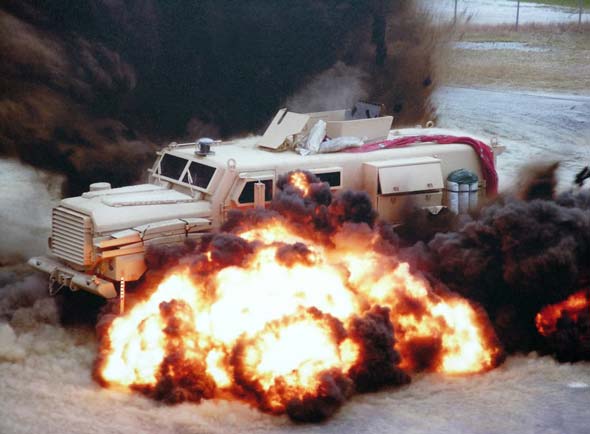


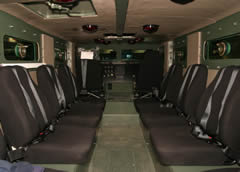
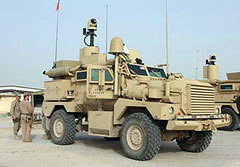
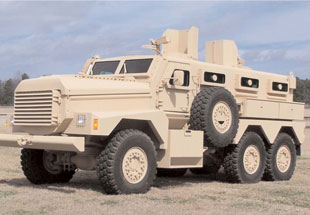

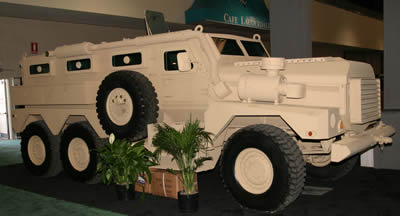

 Tiran to Israeli ships and ordered UN forces to withdraw from their positions along the border.
Tiran to Israeli ships and ordered UN forces to withdraw from their positions along the border. An earlier still experimental version, designated Ye-266 was a Stripped-down MiG-25 prototype used to set several speed and altitude records from 1965 to 1967, could hardly be expected to fly such a dangerous mission over a highly defended strategic target. To the best of available records, no operational aircraft of this type was available in the USSR at the time of the reported recce mission over Dimona. But this fact does not alter their main conclusion, that the Kremlin orchestrated the war for their own strategic reasons.
An earlier still experimental version, designated Ye-266 was a Stripped-down MiG-25 prototype used to set several speed and altitude records from 1965 to 1967, could hardly be expected to fly such a dangerous mission over a highly defended strategic target. To the best of available records, no operational aircraft of this type was available in the USSR at the time of the reported recce mission over Dimona. But this fact does not alter their main conclusion, that the Kremlin orchestrated the war for their own strategic reasons. A book published in Israel, using for the first time IDF documents from the highest level, revealed the concern among the top brass and the political level during the two preceding years about an Egyptian military response to Israeli nuclearization. The top military and government echelons assessed that the nuclear compound in Dimona was a major target for an Egyptian surprise attack, especially if and when Egypt believed Israel was close to producing a nuclear weapon. Two officially recorded (but withheld) high-altitude aerial photography flights over Dimona, on May 17 and 26, were indeed critical for the IDF and the government’s understanding of the Egyptians’ intentions. Now Ginor and Remez insist, that the Soviets instigated, if not flew these dramatic reconnaissance sorties themselves. Whether these were actually flown by MiG-25 or upgraded versions of the operational MiG-21 remains debatable, but certainly not significant. In fact, about 1966 a new version designated MiG-21RF PFM was put in service as a high altitude interceptor, preceding the MiG-25, which followed only a few years later. The MiG-21RF (NATO: “Fishbed-J”) a single-seat tactical reconnaissance version of the MiG-21MF, was recorded flying sorties over Sinai in the early seventies. Another possibility could have been a sortie by the Soviet high altitude, long range strategic reconnaissance aircraft designated Yak-25RV “Mandrake”, which could reach 68,000 feet altitude. The Yakovlev Yak-25 was a direct competitor to the American U-2 spy plane and was known throughout the sixties flying reconnaissance sorties in the Middle East.
A book published in Israel, using for the first time IDF documents from the highest level, revealed the concern among the top brass and the political level during the two preceding years about an Egyptian military response to Israeli nuclearization. The top military and government echelons assessed that the nuclear compound in Dimona was a major target for an Egyptian surprise attack, especially if and when Egypt believed Israel was close to producing a nuclear weapon. Two officially recorded (but withheld) high-altitude aerial photography flights over Dimona, on May 17 and 26, were indeed critical for the IDF and the government’s understanding of the Egyptians’ intentions. Now Ginor and Remez insist, that the Soviets instigated, if not flew these dramatic reconnaissance sorties themselves. Whether these were actually flown by MiG-25 or upgraded versions of the operational MiG-21 remains debatable, but certainly not significant. In fact, about 1966 a new version designated MiG-21RF PFM was put in service as a high altitude interceptor, preceding the MiG-25, which followed only a few years later. The MiG-21RF (NATO: “Fishbed-J”) a single-seat tactical reconnaissance version of the MiG-21MF, was recorded flying sorties over Sinai in the early seventies. Another possibility could have been a sortie by the Soviet high altitude, long range strategic reconnaissance aircraft designated Yak-25RV “Mandrake”, which could reach 68,000 feet altitude. The Yakovlev Yak-25 was a direct competitor to the American U-2 spy plane and was known throughout the sixties flying reconnaissance sorties in the Middle East. Marshal Andrei Antonovich Grechko, the Soviet deputy defense minister, actually had told his Egyptian counterparts in Cairo that the Kremlin had dispatched “destroyers and submarines to the waters near Egypt, some armed with missiles and secret weapons” to help wipe out the Zionists. Thus by the end of May 1967, Soviet amphibious forces were placed on readiness for action aboard of vessels “visiting” Port Said and an air component was placed on alert in the Ukraine, with a small staff group already forward deployed in Egypt.
Marshal Andrei Antonovich Grechko, the Soviet deputy defense minister, actually had told his Egyptian counterparts in Cairo that the Kremlin had dispatched “destroyers and submarines to the waters near Egypt, some armed with missiles and secret weapons” to help wipe out the Zionists. Thus by the end of May 1967, Soviet amphibious forces were placed on readiness for action aboard of vessels “visiting” Port Said and an air component was placed on alert in the Ukraine, with a small staff group already forward deployed in Egypt.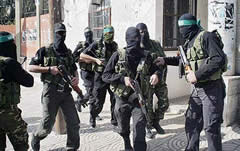
 At about the same time a senior Fatah Official named Jamal Abu-Jedian, was assassinated brutally, hit by no less than 45 bullets, by Hamas gunmen near his Gaza home. Abu-Jedian was a close associate of Mohammed Dahlan, the Fatah strongman and security adviser to Palestinian Authority Chairman Mahmoud Abbas, who was lately hospitalized in Cairo for an operation, and is still not back in the Strip, reports believe. As result, Fatah militias, the Al Aqsa Martyr’s brigades called their people to go and fight in revenge for a last stand in control of the streets.
At about the same time a senior Fatah Official named Jamal Abu-Jedian, was assassinated brutally, hit by no less than 45 bullets, by Hamas gunmen near his Gaza home. Abu-Jedian was a close associate of Mohammed Dahlan, the Fatah strongman and security adviser to Palestinian Authority Chairman Mahmoud Abbas, who was lately hospitalized in Cairo for an operation, and is still not back in the Strip, reports believe. As result, Fatah militias, the Al Aqsa Martyr’s brigades called their people to go and fight in revenge for a last stand in control of the streets. A most dangerous development is foreboding already late Monday, when Fatah’s military wing, the Al-Aqsa Martyr’s Brigades, threatened for its part to expand the fighting to the
A most dangerous development is foreboding already late Monday, when Fatah’s military wing, the Al-Aqsa Martyr’s Brigades, threatened for its part to expand the fighting to the 











